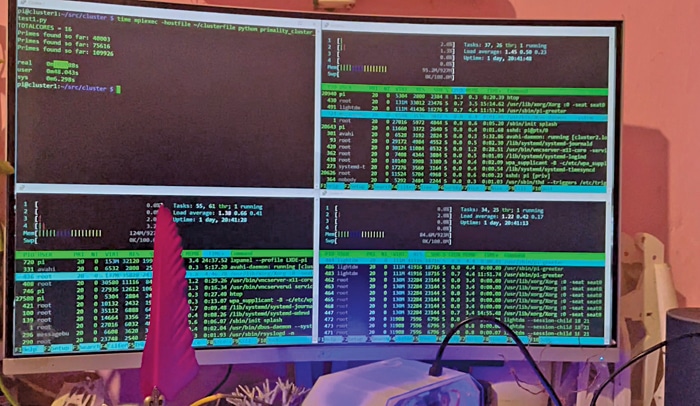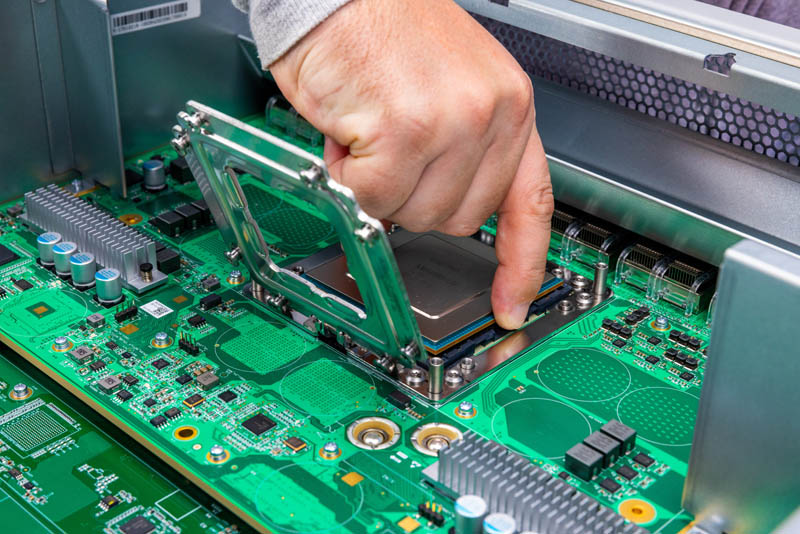Development Of China's Space-Based Supercomputer: Progress And Challenges

Table of Contents
Technological Advancements in China's Space-Based Supercomputing Program
The development of a functional space-based supercomputer demands unprecedented advancements in several key areas. Miniaturization, efficient power systems, and robust data transmission are crucial for its success. Furthermore, the integration of quantum computing promises to unlock even greater capabilities.
Miniaturization and Power Efficiency
Building a supercomputer capable of operating in the harsh environment of space requires significant miniaturization. The challenges are immense:
- Reducing size and weight: Traditional supercomputer components are far too bulky and heavy for space launch vehicles. Significant advancements in microelectronics and materials science are essential.
- Low-power chip design: Power consumption is a critical constraint in space. Innovative low-power chip designs, employing techniques like advanced CMOS technology and novel architectures, are crucial.
- Innovative cooling solutions: The vacuum of space presents unique cooling challenges. Passive and active cooling systems, including advanced heat pipes and radiation cooling, are being explored.
- Advanced materials: The use of lightweight yet durable materials, such as carbon fiber composites and specialized alloys, is essential to withstand the rigors of space travel.
Data Transmission and Communication
Transmitting massive datasets from a space-based supercomputer to Earth presents a formidable challenge. High-bandwidth communication systems are indispensable:
- High-bandwidth laser communication systems: Free-space optical communication offers significantly higher bandwidth than radio frequency systems, enabling rapid data transfer.
- Quantum communication technologies: Quantum key distribution (QKD) can provide unparalleled security for data transmission, protecting sensitive information from interception.
- Data compression and error correction: Advanced algorithms are needed to compress massive datasets and correct errors introduced during transmission through the atmosphere.
- Signal interference and atmospheric distortion: Overcoming atmospheric distortion and interference from other sources remains a significant hurdle.
Quantum Computing in Space
Integrating quantum computing into a space-based supercomputer could dramatically enhance its capabilities. The unique environment of space offers potential advantages:
- Reduced noise and error rates: The vacuum of space and reduced electromagnetic interference could minimize noise, enhancing the stability of quantum computations.
- Challenges in maintaining quantum coherence: Maintaining quantum coherence for extended periods remains a significant challenge, requiring innovative cryogenic cooling and shielding techniques.
- Potential applications: Space-based quantum computing could revolutionize fields like cryptography, materials science, and drug discovery, enabling the simulation of complex quantum systems.
Applications and Potential Benefits of a Space-Based Supercomputer
The potential applications of a China space-based supercomputer are vast and transformative, spanning scientific research, national security, and commercial sectors.
Scientific Research and Exploration
A space-based supercomputer could revolutionize our understanding of the universe and our planet:
- Real-time analysis of astronomical data: Enabling rapid analysis of data from telescopes and other space-based observatories, leading to faster scientific discoveries.
- Improved weather forecasting and climate modeling: Providing more accurate and timely weather forecasts and climate models, crucial for disaster preparedness and resource management.
- Monitoring of environmental changes: Facilitating the monitoring of deforestation, pollution, and other environmental changes on a global scale.
- Enhancing deep space exploration missions: Enabling real-time analysis of data from deep space probes, leading to more efficient and effective exploration.
National Security and Defense
The implications for national security are significant:
- Improved intelligence gathering: Enabling enhanced satellite-based surveillance and intelligence gathering capabilities.
- Real-time threat assessment: Providing real-time analysis of potential threats, enhancing national security.
- Secure communication networks: Establishing highly secure and resilient satellite-based communication networks.
- Development of advanced weaponry systems: Supporting the development and deployment of advanced weapons systems.
Commercial Applications and Economic Growth
The commercial potential is immense:
- High-speed data processing for financial institutions: Providing incredibly fast data processing for high-frequency trading and risk management.
- Advanced image processing for medical applications: Enabling the development of advanced medical imaging techniques and diagnostic tools.
- Development of new materials and technologies: Facilitating the development of new materials and technologies through advanced simulations.
- Creating new industries and jobs: Driving innovation and creating new industries and high-skilled jobs.
Challenges and Obstacles in Developing China's Space-Based Supercomputer
Despite the immense potential, the path to a functional space-based supercomputer is fraught with challenges:
Technological Hurdles
The extreme conditions of space pose significant technological hurdles:
- Radiation shielding: Protecting sensitive electronic components from damaging radiation is paramount.
- Thermal management: Maintaining stable operating temperatures in the extreme temperature variations of space requires advanced thermal management systems.
- Robust and fault-tolerant systems: Systems must be highly reliable and fault-tolerant to ensure continued operation.
- Space-grade components: Developing and procuring components specifically designed for the rigors of space is essential.
Cost and Resource Constraints
The financial and resource requirements are substantial:
- High development costs: The development of a space-based supercomputer will require a massive financial investment.
- Specialized personnel and expertise: A highly skilled workforce with specialized expertise in various fields is essential.
- Logistical challenges: Launching and maintaining a space-based system presents considerable logistical challenges.
- International collaboration: International collaboration could help reduce costs and accelerate progress.
International Competition and Geopolitical Implications
The development of space-based supercomputers is a highly competitive field:
- Competition with other nations: China faces stiff competition from other nations actively pursuing advanced space technologies.
- Potential for arms race: The development of space-based technologies could exacerbate existing geopolitical tensions.
- International cooperation and space treaties: International cooperation and adherence to existing space treaties are essential to ensure responsible development.
- Ethical considerations: Ethical considerations regarding the use and potential misuse of this technology must be addressed.
Conclusion
The development of China's space-based supercomputer represents a monumental undertaking with far-reaching implications. While significant technological and logistical challenges remain, the potential benefits for scientific research, national security, and economic growth are immense. The advancements in miniaturization, data transmission, and quantum computing are critical steps toward achieving this ambitious goal. However, the significant costs, international competition, and ethical considerations cannot be overlooked. Continued monitoring of this ambitious project is crucial to understanding its impact on the future of space-based supercomputing and its implications for global technological leadership. The progress of China's space-based supercomputer will undoubtedly shape the future of computing, and continued observation is vital.

Featured Posts
-
 Man United And Arsenal Battle For Matheus Cunha Signing
May 20, 2025
Man United And Arsenal Battle For Matheus Cunha Signing
May 20, 2025 -
 Efimereyontes Iatroi Stin Patra Savvatokyriako 12 13 Aprilioy
May 20, 2025
Efimereyontes Iatroi Stin Patra Savvatokyriako 12 13 Aprilioy
May 20, 2025 -
 The Enduring Legacy Of Agatha Christies Poirot
May 20, 2025
The Enduring Legacy Of Agatha Christies Poirot
May 20, 2025 -
 Cote D Ivoire Bcr Operation De Controle Surprise Dans Les Marches Abidjanais
May 20, 2025
Cote D Ivoire Bcr Operation De Controle Surprise Dans Les Marches Abidjanais
May 20, 2025 -
 The Extreme Cost Of Broadcoms V Mware Acquisition At And Ts Perspective
May 20, 2025
The Extreme Cost Of Broadcoms V Mware Acquisition At And Ts Perspective
May 20, 2025
